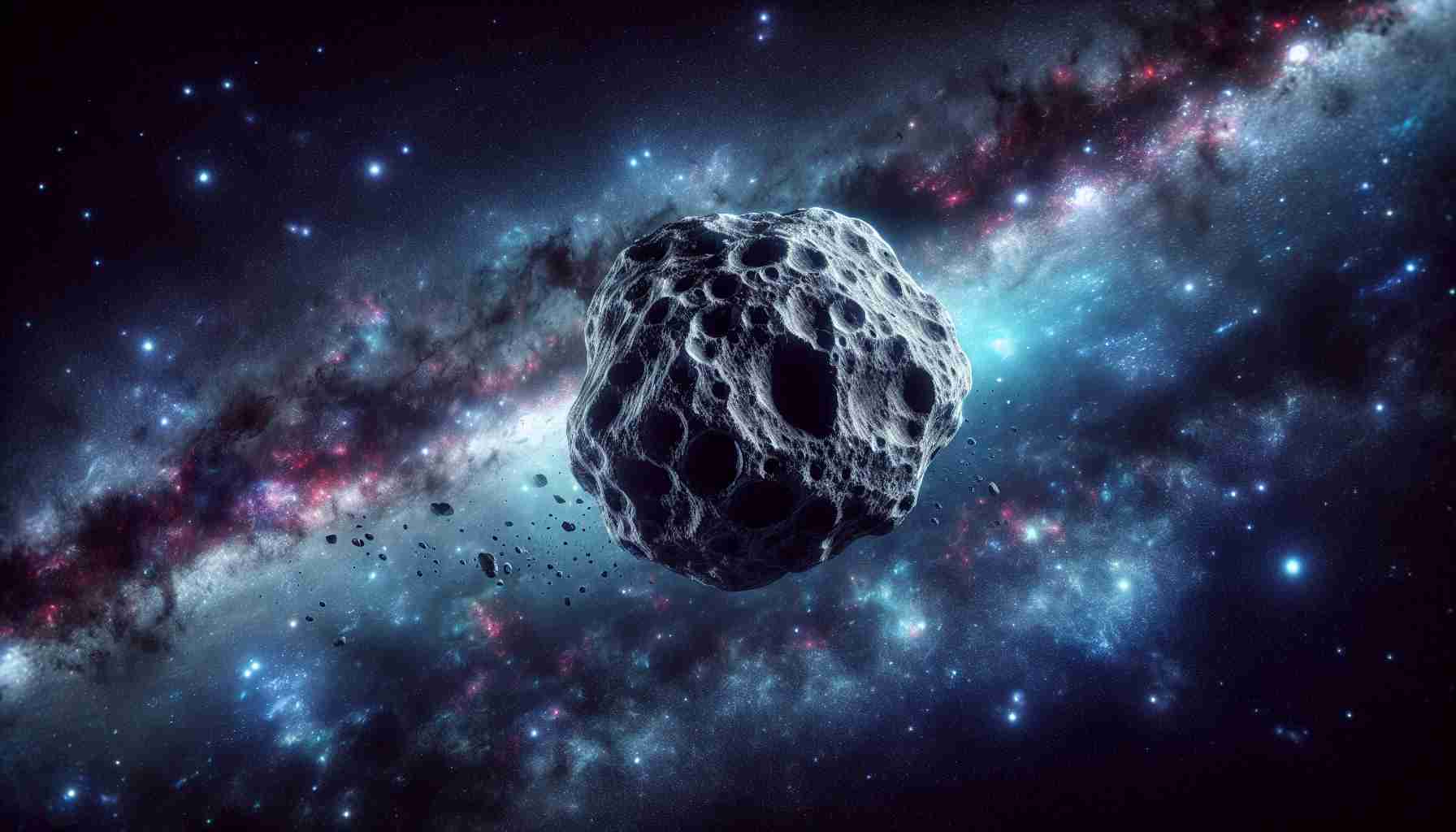- An asteroid named 2024 YR4 presents a 2% probability of colliding with Earth on December 22, 2032.
- Scientists at NASA and beyond are closely monitoring the asteroid’s path, aiming to refine collision probability.
- The potential impact is likened to the Tunguska event of 1908, emphasizing the need for preparedness.
- The James Webb Telescope is scheduled to observe the asteroid, with significant insights expected by early 2028.
- Comparisons are drawn to Apophis, another asteroid which once posed a threat but ultimately passed safely.
- Scientific advancement and resilience are crucial for navigating the delicate balance with cosmic phenomena.
Amid the realms of cosmic ballet, an asteroid named 2024 YR4 sets scientists on edge with a potential collision course with Earth. This celestial intruder, circling the sun with the persistence of a seasoned dancer, promises to visit the Earth’s path in just under a decade. The exact outcome remains a tantalizing mystery wrapped within an infinitesimal 2% probability of collision. Yet, this fraction—a mere sliver—has astronomers like those at NASA peering through their telescopes with unblinking attention.

This cosmic encounter is slated for December 22, 2032, where YR4’s orbit will slice perilously close to Earth. Much like an intricate waltz, its fate turns on minute variables—fractions of a meter here, a fraction of a second there. Scientists implore earthlings to recall the Tunguska event of 1908 when an explosion flattened a Siberian forest, triggered by an atmospheric blast from an entity of similar size.
The focus now rests on harnessing the universe’s best technologies. While the waning moonlight momentarily obstructs Earth’s view, the James Webb Telescope stands poised to unveil this enigma. Observations planned for early 2028 lend hope, granting the world a gaze beyond Earthly limitations.
A previous scare came two decades ago with the asteroid Apophis, which briefly raised concerns but ultimately skirted harmlessly by. With the clock ticking, humanity finds itself teetering on a precipice of scientific breakthrough—or a cosmic close call.
In navigating these celestial uncertainties, one truth resonates: We are bound to a delicate dance with the cosmos. In the face of adversity, knowledge—and resilience—stand as our best defenses.
A Cosmic Tango with Asteroid 2024 YR4: What You Need to Know
Understanding the Approaching Asteroid Threat
Asteroid 2024 YR4’s potential collision course with Earth has sparked significant attention in the scientific community. With a probability of impact standing at 2%, it is crucial to explore what this means for our planet and what steps can be taken. Here’s a deep dive into various aspects surrounding this celestial event, including potential impacts, mitigation strategies, and the technologies that could save Earth.
How-To Steps & Life Hacks: Preparing for Potential Impacts
1. Stay Informed: Regularly check credible sources such as NASA or the European Space Agency for updates on asteroid tracking.
2. Emergency Preparedness: Have a basic emergency kit ready, including food, water, medical supplies, and essential documents, similar to preparations for natural disasters.
3. Community Engagement: Participate in local emergency planning efforts to understand response strategies and geologic implications in case of impact.
Real-World Use Cases: Technology in Asteroid Tracking and Deflection
– NASA’s Planetary Defense Coordination Office (PDCO) utilizes advanced telescopes and radar systems to monitor near-Earth objects (NEOs). Techniques like DART (Double Asteroid Redirection Test) explore deflection possibilities.
– Collaborations with International Space Agencies: Coordinated global efforts enhance our capacity to track asteroids, and partnerships like those between NASA and ESA could spearhead successful deflection missions.
Market Forecasts & Industry Trends: The Growing Field of Space Technology
The space industry is rapidly expanding, with asteroid mining projecting significant growth. The potential threat of asteroids like YR4 is spurring investments in planetary defense technologies, expected to rise in public and private sectors.
Reviews & Comparisons: Asteroid Deflection Missions
– DART vs. AIDA (Asteroid Impact & Deflection Assessment): Both are comparable in aiming to divert potential threats. AIDA plans to study the effects of impact, supplementing data from DART’s mission.
Controversies & Limitations
– Detection Errors: Limitations in current technology can yield false positives or missed detections. Improvements are ongoing to enhance predictive models.
– Ethical Concerns: There are debates over human intervention in cosmic events and potential risks in testing deflection technology.
Features, Specs & Pricing: The Cost of Asteroid Missions
Space missions, including those aimed at deflection, can cost hundreds of millions. For instance, the DART mission had a budget of approximately $330 million. Investing in these missions is essential to mitigate potential catastrophes.
Security & Sustainability: Long-term Strategies
Sustainable development of space strategies involves international cooperation. Concepts such as creating a global spaceforce or regulatory frameworks are being discussed to ensure ongoing monitoring and preparedness.
Insights & Predictions: What Lies Ahead
– Increased Monitoring: As technology advances, more sophisticated monitoring systems will emerge, providing earlier warnings and greater data accuracy.
– Asteroid Mining: YR4, like other NEOs, could present economic opportunities through mining for resources like rare metals, potentially revolutionizing industries.
Tutorials & Compatibility: Engaging with Telescope Data
For enthusiasts looking to contribute, many professional observatories offer programs to engage with public data, allowing citizen scientists a role in tracking asteroids.
Pros & Cons Overview
Pros:
– Advances in technology and science.
– Opportunities in space exploration and mining.
– Strengthened international collaboration.
Cons:
– High costs of defense missions.
– Potential for errors in detection and deflection.
– Ethical and environmental concerns.
Actionable Recommendations
– Educate yourself about NEOs and their risks via platforms like the NASA website.
– Support initiatives for planetary defense funding and research.
– Encourage dialogue on ethical practices in space exploration.
By understanding and preparing for space threats like asteroid 2024 YR4, humanity can leverage technology and innovation to protect the planet and explore opportunities within the cosmos.
